Exuberance is beauty.—William Blake
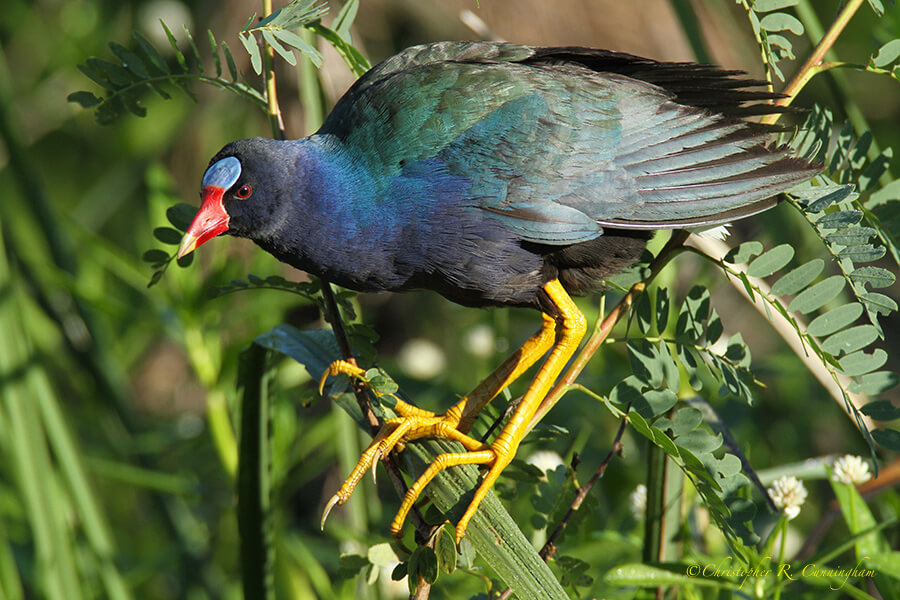
In general, I consider bird photography to be a difficult proposition. Sometimes, as in the case of lightning-fast small songbirds, it’s right on the the edge of what is possible. If any bird makes bird photography easy, though, it is the Purple Gallinule, a fairly large, fairly slow bird that is not particularly wary of humans. Add to this the absolutely spectacular appearance of the adult, and you have a marvelous ambassador to the hobby for any beginner.
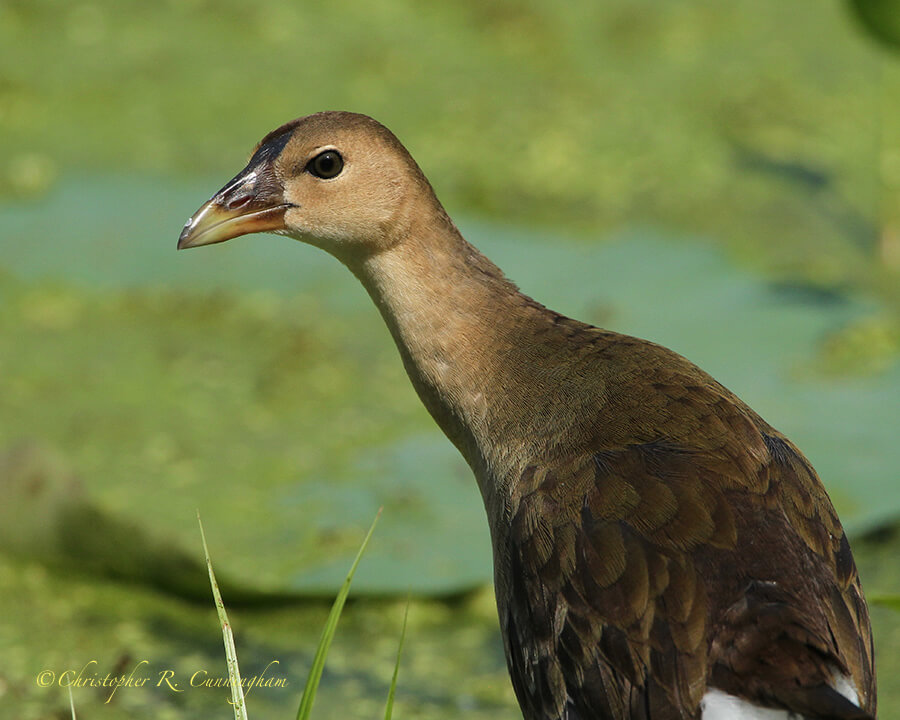
A common misconception about Purple Gallinules is that the brilliantly colored individuals are the males, and the duller brown and turquoise birds are the females. This is not correct: as in most rails, sexes are similar. The more brightly colored birds are adult, and the more subdued ones immature.
Purple Gallinules breed in wetlands across the southern U.S., including our own Brazos Bend State Park. Purple Gallinules like it nice and toasty warm—so they do migrate (except Florida populations). But . . . how to say this politely? Now, I’m not using the word lazy, but rather . . . minimalist! Purple Gallinules migrate as little as possible south around the margins of the Gulf of Mexico in the fall until they find a comfy spot, returning for the summer heat along the Texas Gulf Coast (April through October).
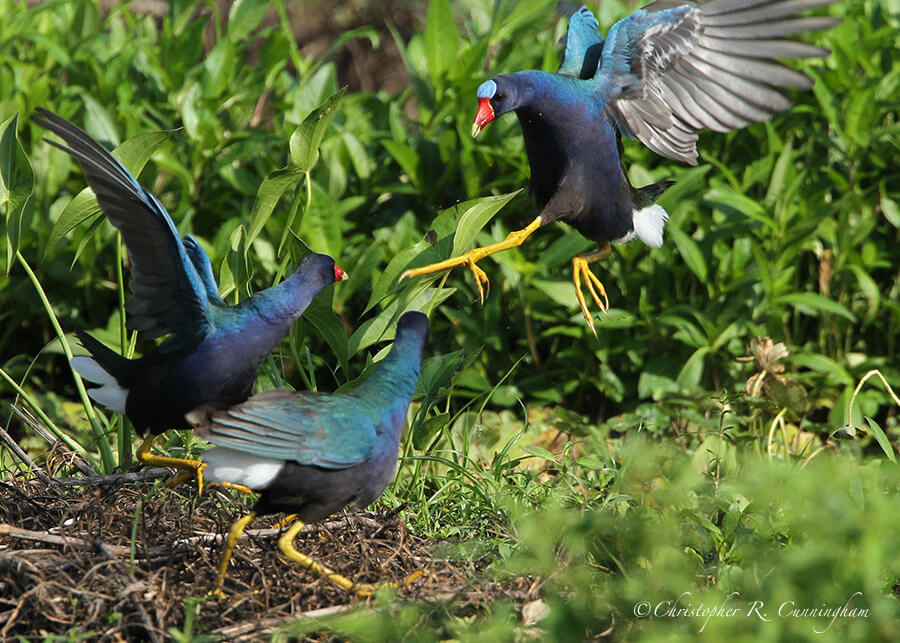
Purple Gallinules are omnivores and eat a variety of foods. One thing to keep an eye for around here is their hunt for aquatic leaf beetles. They manipulate and inspect American lotus leaves and other aquatic vegetation to find them. Elisa documented this behavior in detail in another post.
Other things to watch for are spectacular territorial disputes that erupt between the adult birds. The image above was taken in early June. The purpose of these battles is, ultimately, to be able to produce what’s below: babies! Purple Gallinule chicks are delightful to watch with their gigantic feet, which are even bigger in proportion to the body than in the adult bird.
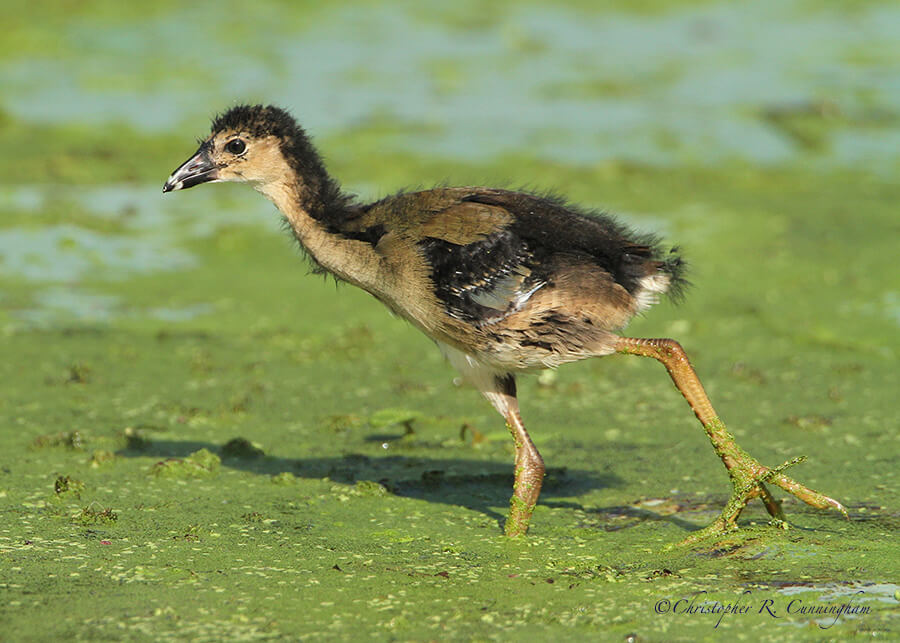
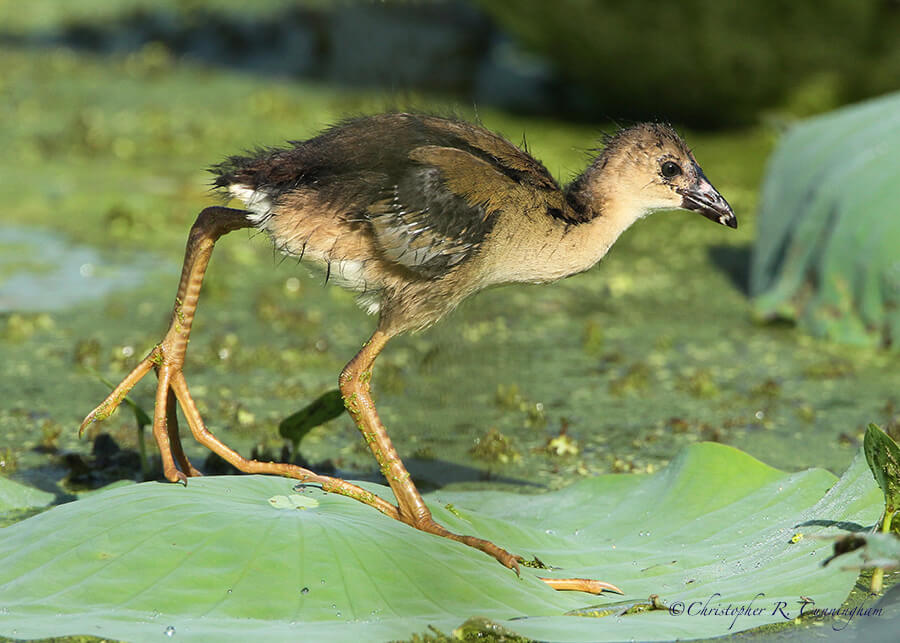
Finally, photographing the Purple Swamphen is on my very long bucket list. This bird is an exotic close relative of the Purple Gallinule that has naturalized in Florida. The Purple Swamphen is a bigger, chunkier version of the Purple Gallinule—but it’s every bit as colorful. Someday.
©2016 Christopher R. Cunningham. All rights reserved. No text or images may be duplicated or distributed without permission.